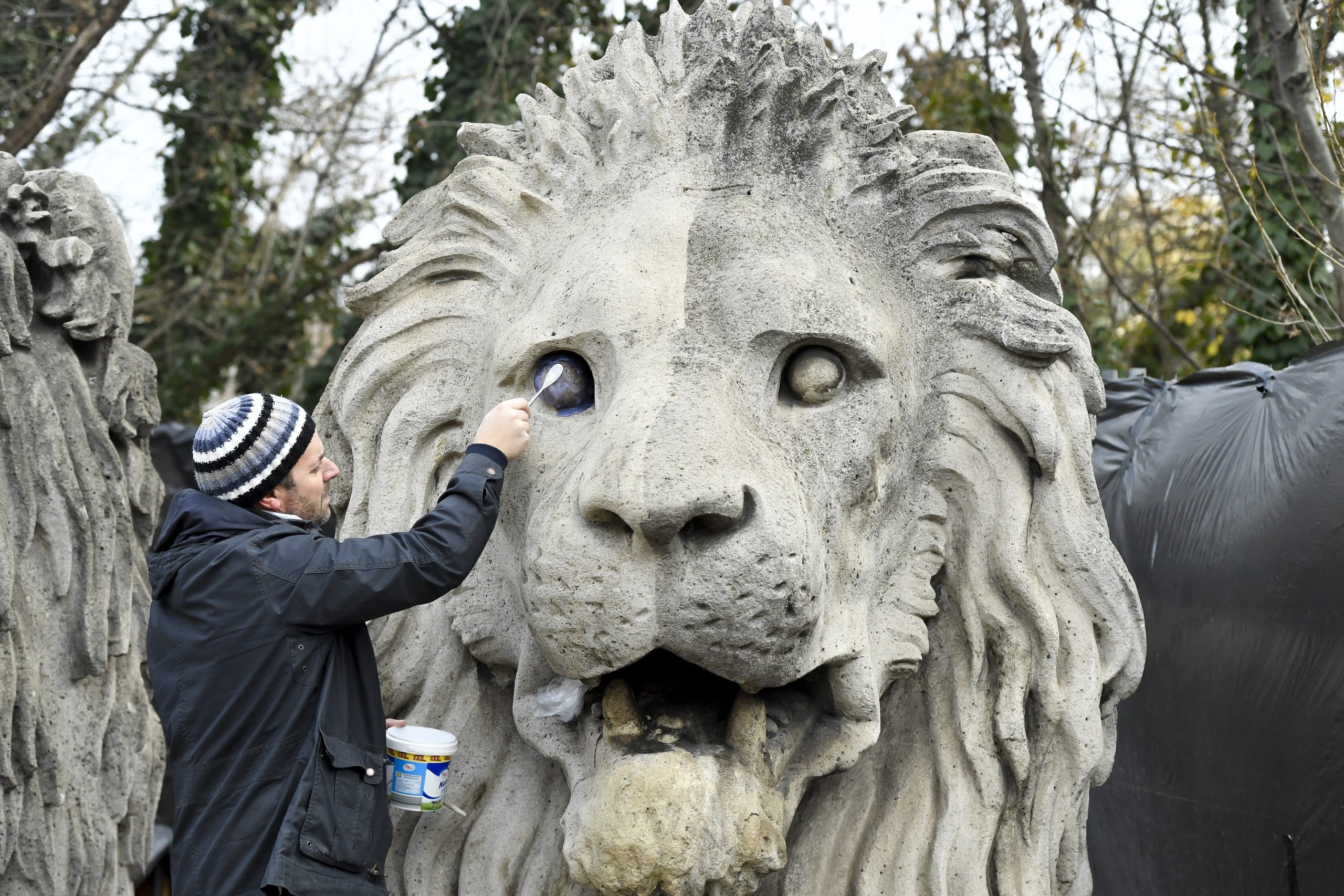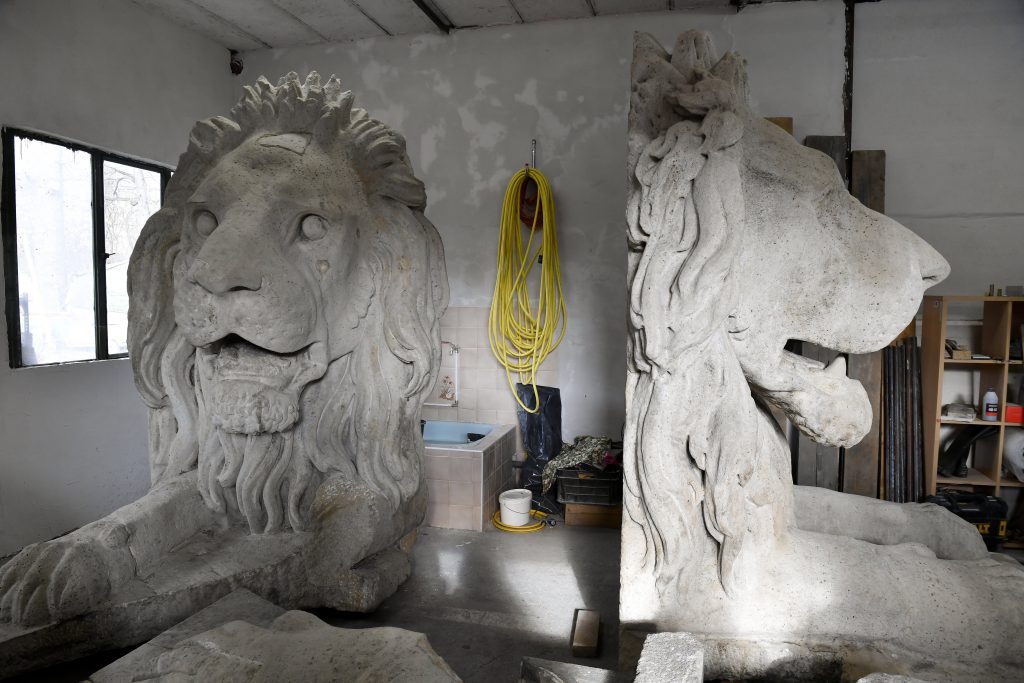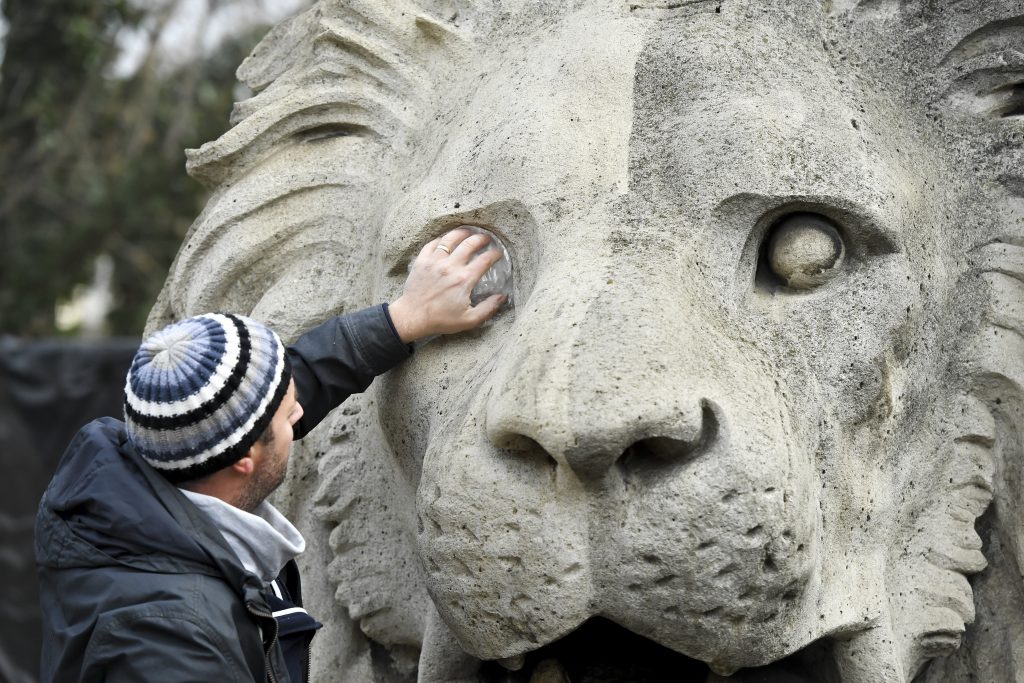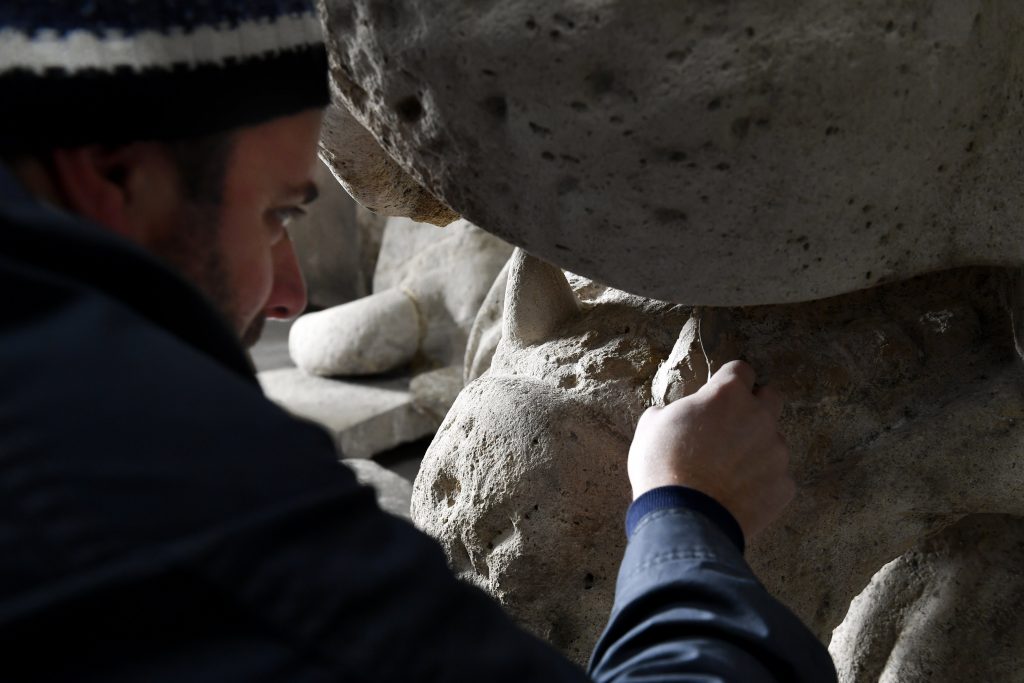
For months now, restorers have been working on the stone ornaments decorating the bridge piers of the Chain Bridge in a studio in Újpest. The sculptures, each weighing more than ten tons, will undergo a thorough restoration and will return to their original places in a state of beauty by December 2022.
As limestone “gypsumizes” due to environmental influences, binding dirt and discoloring the surface, the first thing experts do is clean the sculptures. In the meantime, chemical coatings are applied to surfaces – such as around the mouth or curves – where environmental contaminants have darkened the lions’ surfaces. This is followed by another wash and disinfection.

Stone sculptor restorer, Balázs Szemerey-Kiss, works on the restoration of the lions from the Chain Bridge, which is under renovation, replacing one of the broken stone teeth in the A-Híd Zrt.’s Budapest studio on November 19, 2021. Photo by Szilárd Koszticsák/MTI
The experts will also identify where the sculptures contain foreign material, stone inlays, or other previous replacements. To do this, they will have to tap the lions with a hammer. A detailed defect map is drawn up, showing where there are cracks or areas in need of repair. The sculptures are inspected and the cleaning, which involves a lot of dust and splashing, is carried out outdoors. Only then are the sculptures taken to the studio, where the missing pieces are replaced and the necessary repairs made.

Photo by Szilárd Koszticsák/MTI
The limestone sculptures of Salskút are carved from several blocks of stone, with a lion composed of three parts. The elements weigh 2.8 tons, 5.5 tons, and 4.3 tons respectively. The total weight of a stone lion is 12.6 tons, slightly heavier than a single low-floor city bus without passengers.
The dismantled lions from the Pest side of the bridge were removed from the site in early August, and those on the Buda side in September, after the stone elements were lifted off their three-meter granite foundations one by one with a tower crane. The sculptures will be returned in three parts in a new state of repair by December 2022. The lions will be reassembled in their original positions on their plinths with the chosen bonding material, and the final surface protection will be applied on site.

Photo by Szilárd Koszticsák/MTI
Minor imperfections are repaired with special mortar, and a stone aggregate has already been selected to match the color of the lions. Broken elements are filled in, with carbon fiber joints made where necessary to repair broken teeth. Restorers only replace parts that can be proven to have existed before. For example, they will not install teeth that were not originally part of the sculpture. This also means that not all traces of time are removed from the surface of the sculptures, for example, by retaining small dimples that have naturally formed on the limestone surface.

Photo by Szilárd Koszticsák/MTI
As the water-based cleaning process will resume in spring, the lions will spend the winter outdoors and will return next December.

Photo by Szilárd Koszticsák/MTI
Source: BKK
Featured image via Szilárd Koszticsák/MTI